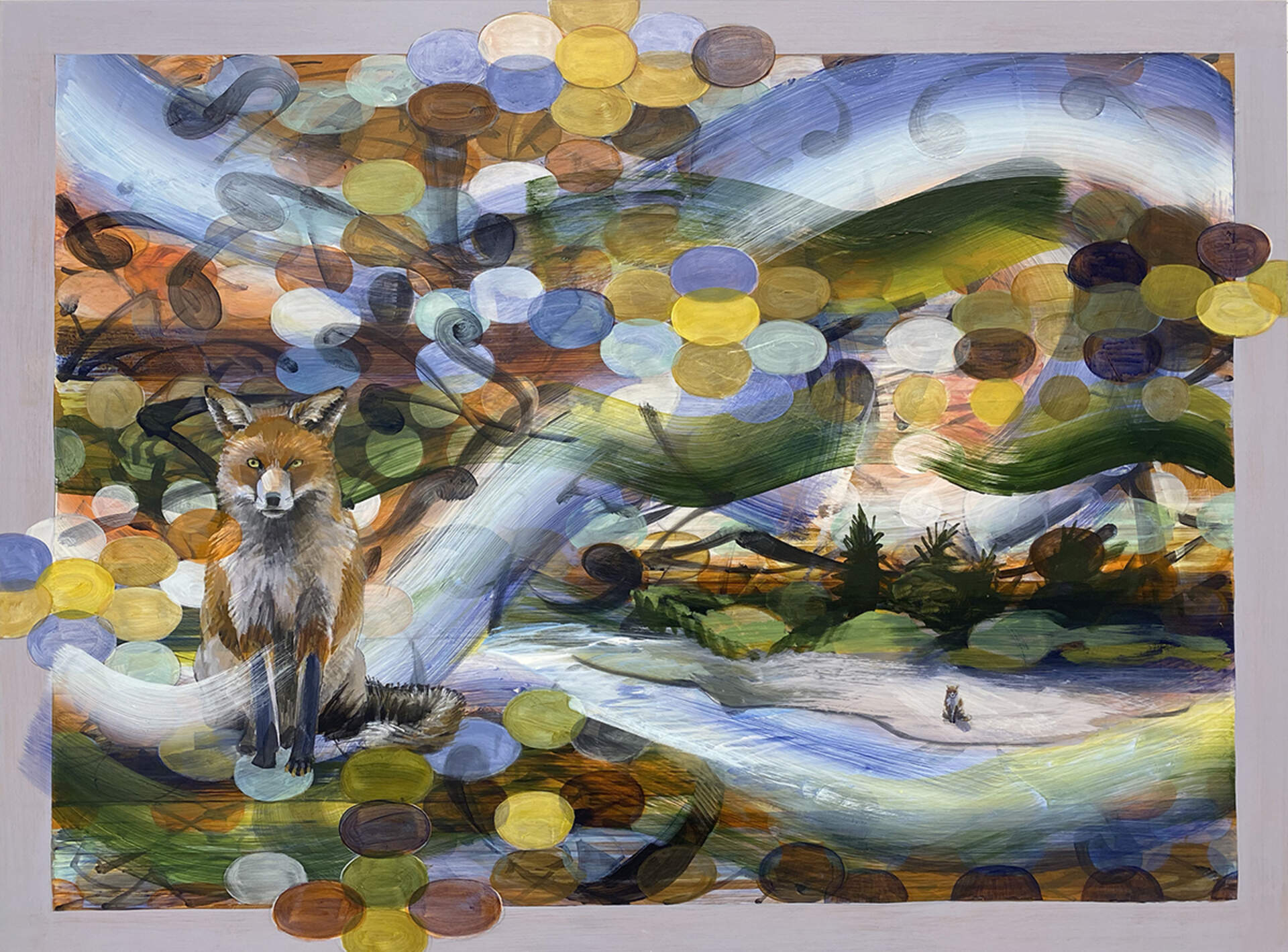Mike Glier (b. 1953)Fox Listening
2022
acrylic on panel
36 x 48 inches
Private Collection
WAVEFORMS
MG: Nancy, waveforms are ubiquitous in Burchfield’s work. What do you think they represent?
NW: I think of Burchfield’s waveforms as continuity. They appear as representations of the landscape’s evolution over millennia, light waves floating through mist, nature’s essential curvilinear form, sound waves from distant rippling streams, birdsong, insect choruses and spring peepers—each a form of energy.
MG: If the wave is a manifestation of energy that courses through the natural world, Light Coming into a Woods brings us closer to understanding the forest as a dimensional field of atoms, vibrating at different frequencies. I think Burchfield, the animist, knew this intuitively. The lively marks and permeating motifs that animate his pictures express his deep understanding that everything—rock, air, water, plant, and muscle—is alive and intermingled and that boundaries between things are simply misperceptions on our part due to the inadequacy of our perceptual apparatus.
NW: Fox Listening has both linear waves and waves of multi-colored ovals. What captures the fox’s attention?
MG: In Fox Listening I used the wave to suggest several things including cool air circulating through the fall forest, the shape of the river behind my house and most importantly the sounds that are engaging the fox. The ovals are a motif derived from studying the movement and sound of water moving through boulders in a shallow river. The fox appears twice in the picture, once in close-up and once at a distance, sitting on a riverbank. I wonder how differently the fox perceives the sounds from what appeals to human ears.
